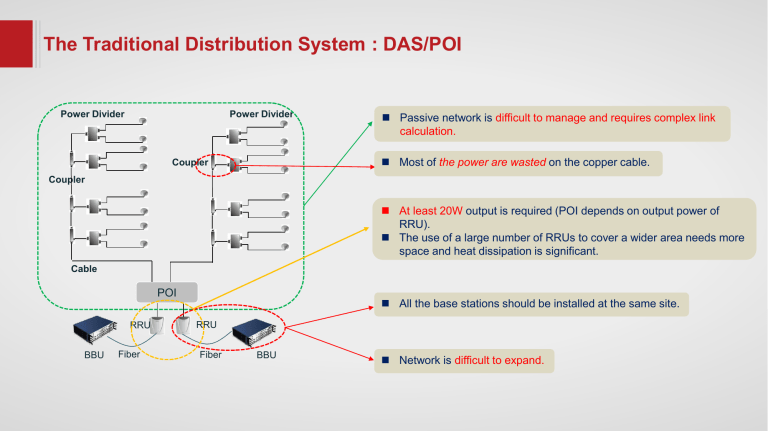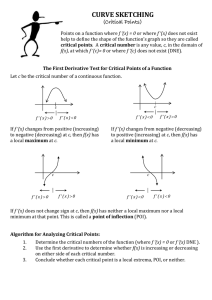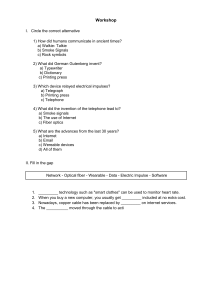
The Traditional Distribution System : DAS/POI Power Divider Power Divider Passive network is difficult to manage and requires complex link calculation. Most of the power are wasted on the copper cable. Coupler Coupler At least 20W output is required (POI depends on output power of RRU). The use of a large number of RRUs to cover a wider area needs more space and heat dissipation is significant. Cable POI RRU BBU Fiber All the base stations should be installed at the same site. RRU Fiber BBU Network is difficult to expand. MDAS Solution Multiservice Distributed Access System Active network is easier to manage and expand. NO link calculation is required. Built on FOC infra. No wasted power and no interference. MDAS Solution 2G RU1 EU1 3G RU2 RU3 AU Very low output power is required. RU4 MIMO1 LTE MIMO2 Coax Fiber Composite EU2 RU5 RU6 RUs are tunable via NMS and can be easily tested and optimized. MDAS Value Proposition Multiservice Distributed Access System Supports 2G, 3G, 4G and 5G (future) networks simultaneously. Optical fiber based transmission mechanism. Can provide coverage up to 400,000 sqm. per BTS (POI solution requires 1 BTS per POI to cover 8,000 sqm.) MDAS does not require link budget calculation. MDAS provides end-to-end management capabilities (AU, EU and RU), line-fed powering of RUs for significant OPEX savings. (POI requires significant space and controlled environmental temperature due to high heat dissipation). MDAS is easy to implement, maintain, manage and expand. MDAS can facilitate and provide better SLA with end users. OPEX Savings: Low Power Consumption MDAS only requires less power consumption compared to POI, thus, there’s a significant savings in OPEX with regards to power requirement. TABLE: MDAS vs POI power requirement comparison MDAS Composite Cable Fiber composite cable used by MDAS is relatively cost-effective than the use of RF feeder cables in traditional DAS system. MDAS Solution Deployment MDAS CONNECTIVITY COAX FIBER COMPOSITE





